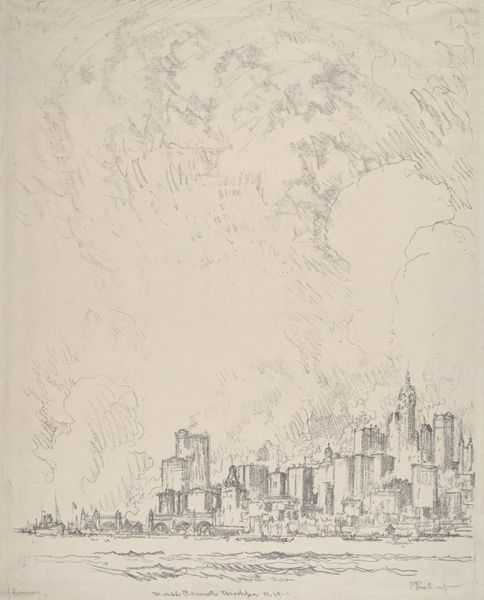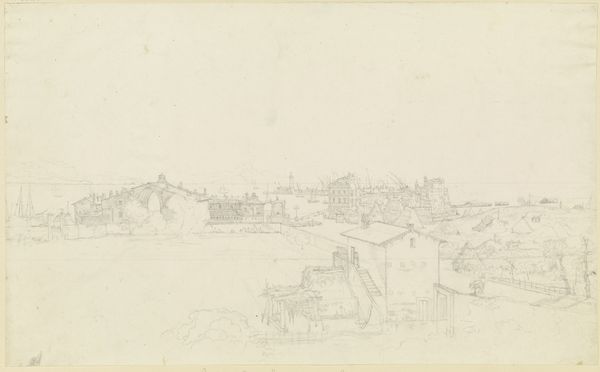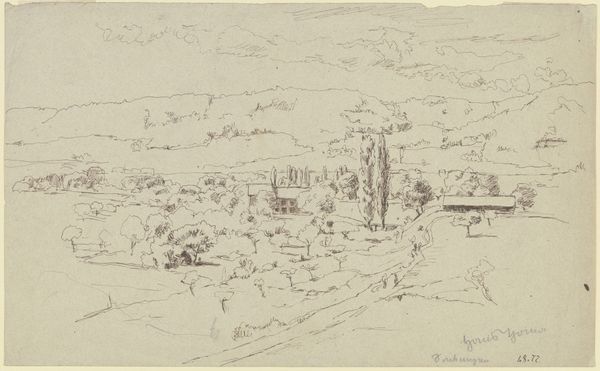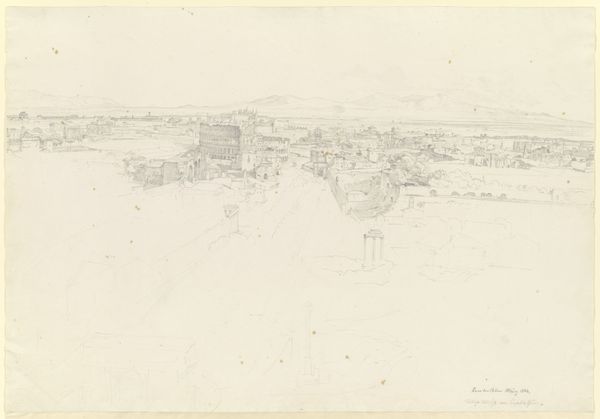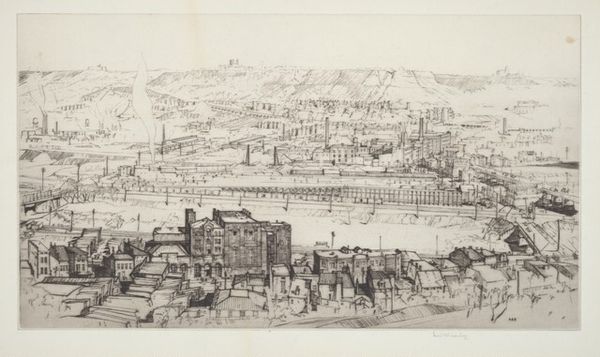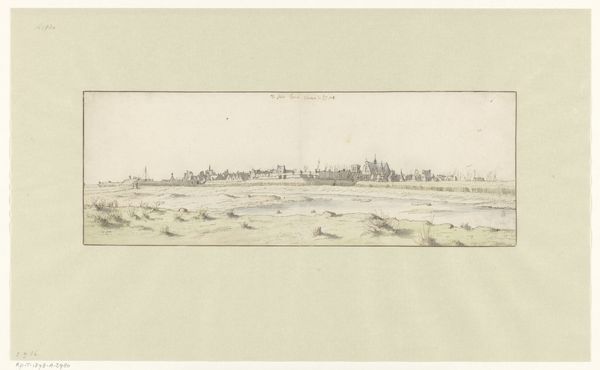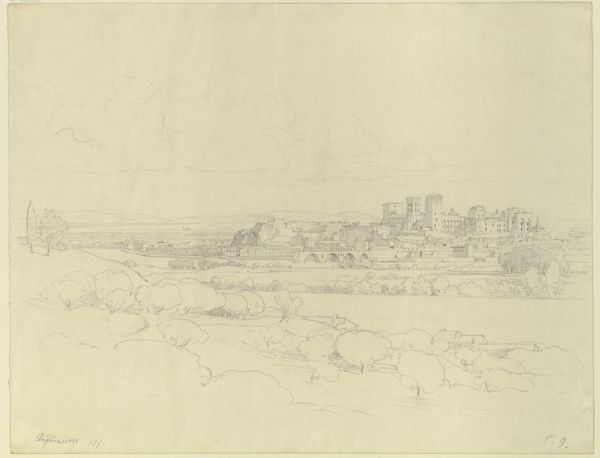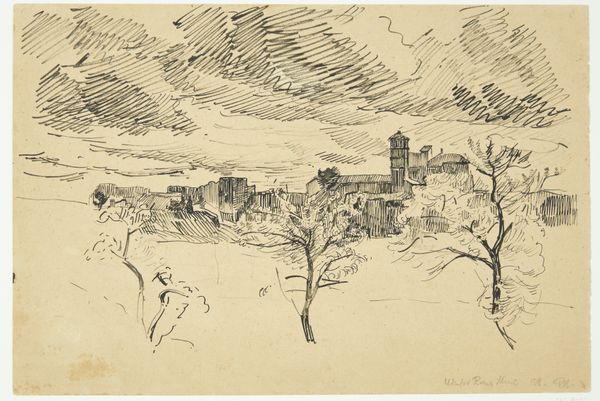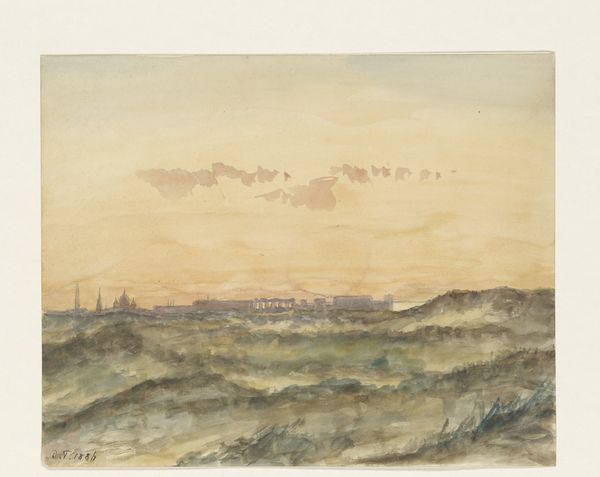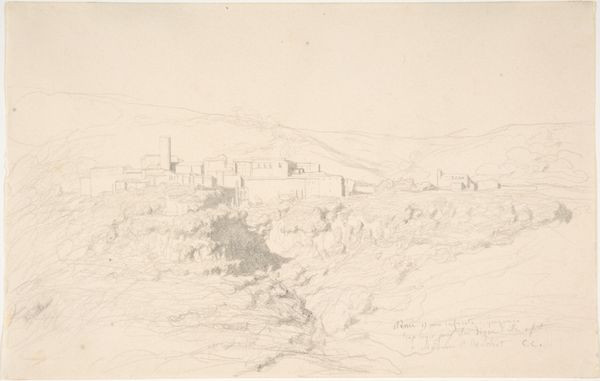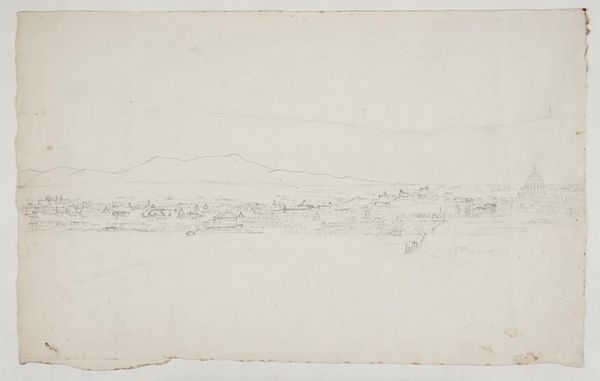
drawing, print, plein-air, watercolor
#
drawing
#
ink drawing
# print
#
plein-air
#
landscape
#
watercolor
#
romanticism
#
cityscape
#
watercolor
#
building
Dimensions: 14-13/16 x 21-1/16 in. (37.6 x 53.5 cm)
Copyright: Public Domain
Curator: This is Thomas Hartley Cromek's "The Acropolis from the Areopagus, Athens," created around 1846. It’s a captivating work combining watercolor and ink, offering a perspective of the Acropolis from the Areopagus. Editor: It’s ethereal. The muted blues and greens give it an almost dreamlike quality. I am particularly struck by the emptiness in the foreground of the image, the mass of rocks seems devoid of people even though the hill it stands on is not. What was Cromek trying to tell us about this historic meeting place? Curator: Cromek, a Romantic artist, would have been deeply influenced by the "plein-air" approach—capturing the immediate, sensory experience of being on location. Think about how this method aligns with Romanticism’s emphasis on feeling, experience and an engagement with an authentic form of nature as a cultural marker of social class. Editor: Exactly! It’s that "on-the-ground" feel that makes me want to push back on its Romantic associations, as its loose ink style coupled with pale watercolours almost make this seem documentary, especially given that it’s located at what was traditionally seen as the place to hold court in the city. What kind of cultural forces influenced Cromek when he chose this viewpoint? Curator: Absolutely. During this period, viewing ancient sites such as Athens was part of a European cultural elite’s understanding of a political continuity between their society and ancient society. Travel and art from that travel was part of affirming your belonging in this political context. Athens held symbolic weight, evoking notions of democracy, philosophy, and Western civilization's origins and England specifically was still keen on solidifying its imperial claim. The British Museum certainly helped popularize this point of view. Editor: A loaded gaze indeed, even in such a seemingly simple rendering of place! When viewed from our contemporary political lens, the drawing and its almost transparent image of a long lost civic location invites complex conversations around ownership and colonial entitlement with real repercussions in contemporary geopolitics. Curator: Precisely. Its historical significance offers us space to reflect on these dynamics. Editor: Definitely something to keep in mind as we continue to navigate this historical perspective, thank you for contextualizing that.
Comments
No comments
Be the first to comment and join the conversation on the ultimate creative platform.
